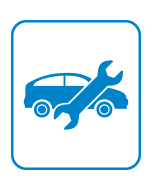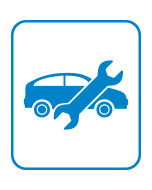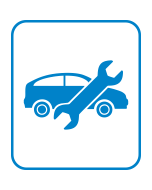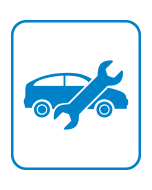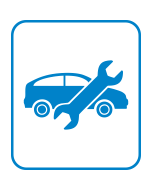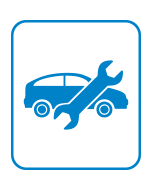Analysis of Urban Air Mobility and the Evolving Air Taxi Landscape, 2019
Analysis of Urban Air Mobility and the Evolving Air Taxi Landscape, 2019
Air Taxi Services are Expected to Commence in 2022 in Dubai and Expand Gradually at a 45.9% CAGR and Reach at Least 430,000 Units in Operation Globally by 2040
25-Oct-2019
North America
Description
This study provides a comprehensive analysis of the fast-evolving urban air mobility (UAM) market. It begins by looking at how UAM vehicles have evolved over the years and providing a snapshot of the current landscape. An exhaustive list of market participants from across the globe is captured and a robust methodology is adopted to narrow down on the top 15 companies at the moment. The report looks at the key application areas, a tentative timeline when they are likely to be commercialised and the business models and revenue streams which can arise out of those application areas. It also looks at the various types of UAM vehicles, their unique features and the application areas that they are best suited for. Further, this research exhaustively analyses the nascent air taxi market. Governments which have favourably initiated air taxi related programmes and their vision are analysed. The report goes on to understand the key infrastructure and support services required for the seamless operation of air taxis to take place, thereby painting a picture of the air taxi ecosystem of the future.
The increase in the number of vehicles on urban roads and the associated traffic congestion makes it difficult for daily commuters, emergency responders and ambulances to reach their destination on time. An effective alternative would be to use the underutilised urban airspace to make travel in congested areas more effective. Helicopters were the only vehicles which were available for urban commute till now. However, their bulky frame, lengthy propellers and noise levels make them unsuitable for mass urban transportation. Hence there exists a gap for a new vehicle which can be effectively used for urban air transport. Urban air mobility (UAM) vehicles have the potential to fill this gap, ushering in an era of seamless air travel. The advent of UAM vehicles poses a number of pertinent questions related to safety, infrastructure, regulations, privacy, traffic management and key application areas.
Key Features
These questions gave rise to the key objectives of this study listed below:
- To capture the evolution of UAM vehicles over the years, till 2019
- To identify key participants in the UAM vehicles market as of 2019
- To decipher the emergence of UAM vehicles application areas by 2040
- To identify new business models for UAM vehicles
- To understand how the air taxi market could evolve in the future
- To provide key conclusions and actionable recommendations
Key participants analysed in this study are listed below:
- Volocopter
- Ehang
- Aeromobil
- Terrafugia
- Lilium
- Kitty Hawk
- VRCO
- Vertical Aerospace
- Airbus
- Toyota
- Pal-V
- Bartini
- Opener
- Hoversurf
- Audi
- Porsche
- Bell Aviation
- Joby Aviation
- NFT Inc
- Vimana
- Workhorse Group
Table of Contents
Executive Summary—Key Takeaways
Executive Summary—Vehicle Segmentation
Executive Summary—UAM Players Racing towards Commercialisation
Executive Summary—Business Services and Revenue Streams
Executive Summary—The Evolving Air Taxi Ecosystem
Executive Summary—Possible Countries with Air Taxi Services by 2040
Current Scenario and Future Outlook
Research Scope
Defining Passenger UAM Vehicles
Research Aims and Objectives
Key Questions this Study Will Answer
Research Methodology
Research Background
Evolution of UAM Vehicles—Key Milestones
Vehicle Segmentation
The Rapidly Evolving UAM Landscape
Global UAM Programs—A Snapshot
Snapshot of Major Participants
Snapshot of Major Participants (continued)
Snapshot of Major Participants (continued)
Snapshot of Major Participants (continued)
Snapshot of Major Participants (continued)
Snapshot of Major Participants (continued)
Methodology to Identify the Top 15 Companies
The Top 36 Companies Shortlisted based on the Methodology
Top 15 UAM Companies
Top 15 UAM Companies (continued)
Top 15 UAM Companies (continued)
Potential Air Taxi Operators of the Future
Select Future Applications of UAM Vehicles
Police Patrol—Hoversurf Hoverbike
Recreation—Kitty Hawk Flyer
Air Ambulance—Metro Skyways CityHawk
Organ Transport—Ehang 184
Flying Car Grand Prix—Alauda Airspeeder
Timeline for UAM Vehicle Applications
Business Services and Revenue Streams
Comparison by Application for Different UAM Vehicles
Government Initiatives Poised to Fast Track Air Taxi Adoption
The Evolving Air Taxi Ecosystem
Countries Where Air Taxis Could Be Commercialised by 2040
The Dubai Air Taxi Programme
The New Zealand Air Taxi Programme
The Singapore Air Taxi Programme
Frankfurt Air Taxi Programme
The Paris Air Taxi Programme
The Uber Elevate Programme
Pricing—How Much Would Uber Air Taxi Service Cost?
Lilium’s Air Taxi Vision
Inter-City Commute—The Rolls Royce Air Taxi
Inter-City Commute—Bell Nexus
Inter-City Commute—Aston Martin Luxury Taxi Concept
Inter-City Commute—Aeromobil 4.0
Inter-City Commute—Terrafugia Transition
Inter-City Commute—The PAL-V Liberty
Inter-City Commute—VRCO NeoXcraft
Shifting Focus to Air Taxi Infrastructure
Futuristic Skyport Concepts from Uber Summit
UAM Vehicle Landing Pads—A Standard Feature in Future Homes
Blade—Luxury Lounges For Urban Air Mobility
Skyports—Developing the Vertiports of the Future
Deseret UAS—Network of Testing Ranges for UAM Vehicles
Robotic Skies—MRO Specialists for UAM Vehicles
Challenges for Existing and New Market Participants
Tackling Challenges—Safety
Tackling Challenges—Fuel Efficiency and Range
Tackling Challenges—Take-Off and Landing and Human Error
Tackling Challenges—Noise
Tackling Challenges—Air Traffic Control Related
Key Technology Mapping for UAM Vehicles
Honeywell—Moving First To Supply Technologies Required for UAM
Hydrogen Propulsion—Alaka’í Technologies
Boeing NeXt—Using Blockchain and AI to Track Drones
Reducing Propulsion Noise
Wheels for Flying Taxis—The Goodyear Aero Concept
UAM Vehicles—Drone Platforms
Number of UAM Vehicles in the Air Taxi Market—Forecast
Number of Air Taxis—Country-level Snapshot
Global Commercial Drone Regulations Landscape
Evolving BVLOS Regulations
UAM Operations in the United States—Present FAA Regulations
UAS Integration Programme Could Pave for Future Air Taxi Adoption
Regulatory Initiatives and Engagements in the Passenger UAM Space
Passenger UAM Vehicles—Certifications and Government Collaborations
Delivery Drones—Growth Opportunities
Strategic Imperatives
The Last Word—3 Big Predictions
Legal Disclaimer
Market Engineering Methodology
List of Exhibits
List of Exhibits (continued)
Key Features
These questions gave rise to the key objectives of this study listed below:
- To capture the evolution of UAM vehicles over the years, till 2019
- To identify key participants in the UAM vehicles market as of 2019
- To decipher the emergence of UAM vehicles application areas by 2040
- To identify new business models for UAM vehicles
- To understand how the air taxi market could evolve in the future
- To provide key conclusions and actionable recommendations
Key participants analysed in this study are listed below:
- Volocopter
- Ehang
- Aeromobil
- Terrafugia
- Lilium
- Kitty Hawk
- VRCO
- Vertical Aerospace
- Airbus
- Toyota
- Pal-V
- Bartini
- Opener
- Hoversurf
- Audi
- Porsche
- Bell Aviation
- Joby Aviation
- NFT Inc
- Vimana
- Workhorse Group
| No Index | No |
|---|---|
| Podcast | No |
| Author | Joe Praveen Vijayakumar |
| Industries | Automotive |
| WIP Number | MEE6-01-00-00-00 |
| Is Prebook | No |
| GPS Codes | 9673-A6,9800-A6,9807-A6,9000-A1,9813-A6,9965-A6,9A57-A6,9AF6-A6 |
 USD
USD GBP
GBP CNY
CNY EUR
EUR INR
INR JPY
JPY MYR
MYR ZAR
ZAR KRW
KRW THB
THB